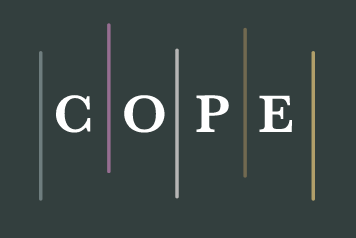The Qur'an's Perspective on the Phenomenon of Cyberbullying on Social Media: Contextual Approach
DOI:
https://doi.org/10.58355/maqolat.v3i2.134Keywords:
cyberbullying, Contextual, social media, sakharaAbstract
This study examines the phenomenon of cyberbullying on social media through a contextual approach, focusing on the interpretation of relevant Qur'anic verses and their application to modern digital behavior. The research identifies that the majority of cyberbullying cases on platforms like Instagram, Facebook, X (formerly Twitter), and TikTok take the form of verbal harassment, including flaming, impersonation, trickery, and denigration. The research method is library research, with primary data sourced from the Qur'anic term “sakhara” (humiliating or mocking), This term is further interpreted using both classical and contemporary exegeses. The paradigm used is contextual hermeneutic approach. The results of this study show that: 1) Cyberbullying on social media is found on Instagram, Facebook, X, and TikTok. The cyberbullying patterns in the majority of social media are verbal harassment with the aim of insulting and humiliating someone. 2) The term sakhara is the root word that is closest to the meaning of cyberbullying because it has insulting and degrading meanings. The the word sakhara is mentioned 32 times in the Qur'an. Three main verses are selected to be discussed: Q. S. al-Hujurat [49]:11, Q. S. at-Taubah [9]:79, and Q.S. al-An’am [6]:10. The verses reveal a clear prohibition against mocking and degrading others. These verses highlight the importance of maintaining respect and dignity, even in the face of mockery, and the need for resilience and faith in the face of such challenges. The study concludes that insults and mockery should not be normalized, as they can lead to harmful consequences, including the emergence of cyberbullying, which has significant negative effects on individuals.
Downloads
References
Abu Fida’ Ismail bin Umar bin Katsir al-Qursyi ad-Damasyqi. (1923). Tafsir Ibnu Katsir. In Tafsir Ibnu Katsir (p. 374).
Ahmad Rohman, Masduki Asbari, D. R. (2024). Literasi Digital: Revitalisasi Inovasi Teknologi. Information Systems and Management, 3(1), 1–4.
Beran, T. N., Rinaldi, C., Bickham, D. S., & Rich, M. (2012). Evidence for the need to support adolescents dealing with harassment and cyber-harassment: Prevalence, progression, and impact. School Psychology International, 33(5), 562–576. https://doi.org/10.1177/0143034312446976
Dinda Charmelita Trias Maharani. (2023). Cyberbullying Kian Masif di Ruang Digital, Ini Cara Mencegah dan Mengantisipasinya. Liputan6.Com. https://www.liputan6.com/tekno/read/5318020/cyberbullying-kian-masif-di-ruang-digital-ini-cara-mencegah-dan-mengantisipasinya
Fatah, A. (2023). Al-Qur’an dan Isu-Isu Kontemporer, Dialektika antara Teks dan Realitas. In Al-Qur’an dan Isu-Isu Kontemporer, Dialektika antara Teks dan Realitas (1st ed., pp. 62–64). Tonggak Media.
Fatah, A., & Khusniyah, A. (2022). Qur’anic Digital Civility: Contemporary Indonesian Muslim Interaction on Social Media. Jurnal Theologi, 33(2), 179–202.
Fitriani, Y. (2021). Pemanfaatan Media Sosial Sebagai Media Penyajian Konten Edukasi Atau Pembelajaran Digital. Journal of Information System, Applied, Management, Accounting and Research, 5(4), 1006–1013. https://doi.org/10.52362/jisamar.v5i4.609
Hinduja, S., & Patchin, J. W. (2013). Social influences on cyberbullying behavior among middle and high school students. Journal Youth Adolescence, 711–712.
Ibnu Manzur. (1999). Lisan al’arab. In Lisan al’arab (p. 352). Dar al-Ma’arif.
Lagi, Penghina Presiden di Media Sosial Ditangkap Polisi. (2021). DITRESKRIMSUS POLDA KEPRI. https://www.ditreskrimsuspoldakepri.id/berita/read/Lagi--Penghina-Presiden-Jokowi-di-Media-Sosial-Ditangkap-Polisi
Nancy E Willard. (2007). Cyberbullying and Cyberthreats:Responding to the Challenge of Online Social Aggression, Threats, and Distress. Research Press.
Naseer, S., & Matar, H. (2023). Quranic and Prophetic Ways to Reduce the Phenomenon of Bullying in Society. KnE Social Sciences. https://doi.org/10.18502/kss.v8i6.13127
Nisa, Z. A. (2024). Kemal Palevi Singgung Soal Konten Perceraian, Ria Ricis Beri Tanggapan Menohok di X. Jawa Pos Radar Tuban. https://radartuban-jawapos-com.cdn.ampproject.org/v/s/radartuban.jawapos.com/infotainment/amp/864077683/kemal-palevi-singgung-soal-konten-perceraian-ria-ricis-beri-tanggapan-menohok-di-twitter?amp_gsa=1&_js_v=a9&usqp=mq331AQIUAKwASCAAgM%3D#amp_tf=Dari
Novan Ardy Wiyani. (2014). Save Our Children Form School Bullying.
Rahmawati, D. (2022). Konsep Bullying dalam Perspektif Tafsir Al-Maraghi dan Relvensinya di Era Digital. Institut Agama Islam Negeri Kudus.
Riyawan, R. (2024). Fisik Aurel Hermasnyah Dihina, Bentuk Badan Disebut Semakin Gemuk, Atta Halilintar Pasang Badan. Tribun-Video.Com. https://video-tribunnews-com.cdn.ampproject.org/v/s/video.tribunnews.com/amp/view/687625/fisik-aurel-hermansyah-dihina-bentuk-badan-disebut-makin-gemuk-atta-halilintar-pasang-badan?amp_gsa=1&_js_v=a9&usqp=mq331AQIUAKwASCAAgM%3D#amp_tf=Dari %251%24s&aoh
Sabkan, A., & Bidaya, Z. (2021). Desain Pola Integritas Cyber dalam Mengurangi Kejahatan Cyberbullying. Jurnal CIVICUS: Pendidikan-Penelitian-Pengabdian-Pndidikan Pancasila&Kewarganegaraan, 9(1), 40–46.
Saeed, A. (2006). Interpreting the Qur’an towards a contemporary approach. Routledge.
Shihab, M. Q. (2002). Tafsir Al-Misbah: Pesan, Kesan, dan Keserasian Al-Qur’an. Lentera Hati.
Shihab, M. Q. (2007). Ensiklopedia al-Qur’an Kajian Kosakata Jilid 3. In Ensiklopedia al-Qur’an Kajian Kosakata Jilid 3 (p. 325). Lentera Hati.
Sule, M., & Musa, S. (2023). MUSLIM SCHOLARS AND CHALLENGES OF SOCIAL MEDIA DA’WAH: CYBERBULLYING IN PERSPECTIVE. Akademika, 12(01), 107–120. https://doi.org/10.34005/akademika.v12i01.2675
Syarifah, S., Harfiani, R., & Rudi, H. (2024). The Application Of Islamic Religious Education In Preventing And Dealing With Bullying. Edutec, 8(1). https://doi.org/10.29062/edu.v8i1.1035
Syekh Muhammad At-Tohir bin ’Asyur (Ibnu Asyur). (1984). Tafsir At-Tahrir wa At-Tanwir. In Tafsir At-Tahrir wa At-Tanwir (p. 594).
Thabathaba’i. (1973). Al-Mizan fi Tafsir al-Qur’an. In Al-Mizan fi Tafsir al-Qur’an (p. 593). Muassasah Al-Alamy Li Al-Mathbuat.
Wahbah Az-Zuhaili. (1991). Al-Tafsir Al-Munir fi al- Aqidah wa al- Syari’ah wa al-Manhaj. In Al-Tafsir Al-Munir fi al- Aqidah wa al- Syari’ah wa al-Manhaj (p. 566). Dar al-Fikr.
Yuhandra, E., Akhmaddhian, S., Fathanudien, A., & Tendiyanto, T. (2021). Penyuluhan Hukum tentang Dampak Positif dan Negatif Penggunaan Gadget dan Media Sosial. Empowerment : Jurnal Pengabdian Masyarakat, 4(01), 78–84.
Downloads
Published
How to Cite
Issue
Section
License
Copyright (c) 2025 abdul fatah, Isna Fitri Choirun Nisa’

This work is licensed under a Creative Commons Attribution 4.0 International License.






















